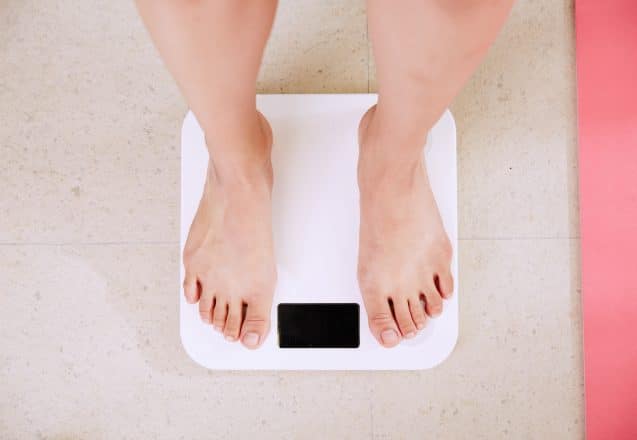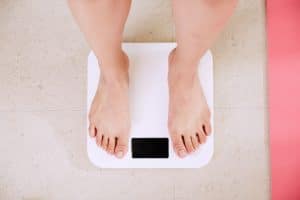Herbs And Other Remedies To Decrease Stress
 Clients at Habitat Health in Lakeland, FL, love working out. They say it helps them decrease stress. There are often stressful times when exercising isn't possible. Some have asked for alternative remedies, such as herbs, mental focus routines, or other possibilities that don't require putting on gym clothes and working up a sweat.
Clients at Habitat Health in Lakeland, FL, love working out. They say it helps them decrease stress. There are often stressful times when exercising isn't possible. Some have asked for alternative remedies, such as herbs, mental focus routines, or other possibilities that don't require putting on gym clothes and working up a sweat.
Stop the stress before it becomes a problem.
Early man faced many threats, such as a wild animal or an enemy. Those stressors required man to either run or fight. The stress triggered hormones that changed the body, allowing man to do those two things more successfully. Today different types of stressors not requiring running or fighting exist. The body's response is still the same, even though the stressed person's response isn't. That causes the changes to be unresolved and creates serious health issues. Learning techniques to prevent the fight or flight response, such as breath focus, mindful meditation, or guided imagery can do that.
Have a cup of tea to relax your nerves.
All types of tea from the leaves of the camellia sinensis plant, traditional black, white, or green tea, help relax the body and provide relief. They all contain L-theanine, but green tea has the most. L-theanine reduces stress hormones and increases hormones that calm the brain. Several herbal teas are beneficial for reducing stress. Lemon balm, from the mint family, has a lemony smell when crushed. Like other members of the mint family, it's easy to grow but quite invasive once it starts. Chamomile, motherwort, valerian, and passionflower are a few others.
Eat food that helps reduce stress.
Eating sweet potatoes, swiss chard, or organ meats helps reduce stress. Swiss chard contains magnesium. Magnesium has a calming effect and a deficiency can cause panic attacks and anxiety. You can absorb magnesium through the skin, so taking a bath in Epsom's salts---magnesium sulfate---can be so relaxing. Sweet potatoes contain potassium, vitamin C, and other nutrients that reduce the stress response. It's the vitamins B12, B6, folate, and riboflavin in organ meats like liver that help lower stress levels.
- An anti-inflammatory diet that's high in B vitamins and devoid of foods that contain added sugar can help nerve functioning and keep stress levels lower. Food containing garlic can also reduce stress.
- Increase food with omega-3 fatty acids, like fatty fish or flax seed. Prison studies showed that when food with omega-3 fatty acids increased and omega-6 reduced, incidences of violence diminished.
- Eat food that's good for your gut microbiome. It plays a role in mental health and stress. Probiotic foods include kimchi, yogurt, and sauerkraut. Add prebiotic foods with soluble fiber to feed the beneficial bacteria.
- Two stress-relieving foods many people love include dark chocolate and pumpkin seeds. The dark chocolate must be at least 90% cacao. Both contain magnesium.
For more information, contact us today at Habitat Health & Fitness



 There are many articles about warming up before exercise. It's important to warm the muscles to get them pliable and avoid injury. However, cooling down after exercise is just as important, but it's often skipped. Why? In some cases, people don't realize it's important, but in most cases, they're tired and mentally done with anything that involves moving one more minute. It doesn't have to be that difficult. You can cool down, without significantly adding to your workout time.
There are many articles about warming up before exercise. It's important to warm the muscles to get them pliable and avoid injury. However, cooling down after exercise is just as important, but it's often skipped. Why? In some cases, people don't realize it's important, but in most cases, they're tired and mentally done with anything that involves moving one more minute. It doesn't have to be that difficult. You can cool down, without significantly adding to your workout time.
 People exercise for many reasons. Some like the energy it gives them or the exhilaration felt after working out hard. Others appreciate the changes it makes in their bodies and how good they look. Most people know that working out also provides health benefits when it's done regularly. Even when people exercise to lose weight, better health is often one of the reasons for weight loss. While seeing body changes doesn't happen overnight, you'll often notice more energy relatively quickly and feel less stress almost immediately after a workout. That's because exercise is a stress buster. It burns off stress hormones and sets your body back to normal.
People exercise for many reasons. Some like the energy it gives them or the exhilaration felt after working out hard. Others appreciate the changes it makes in their bodies and how good they look. Most people know that working out also provides health benefits when it's done regularly. Even when people exercise to lose weight, better health is often one of the reasons for weight loss. While seeing body changes doesn't happen overnight, you'll often notice more energy relatively quickly and feel less stress almost immediately after a workout. That's because exercise is a stress buster. It burns off stress hormones and sets your body back to normal.
 While working out is an important part of weight loss and fitness, nutrition also plays an important role. We have local farmers in Lakeland, FL, that grow some of the healthiest options, such as leafy greens. You get many health benefits from adding leafy greens to your diet. They're high in fiber and water content, so they're filling, yet have only a few calories, improving weight loss potential. Depending on the green, there are a wide variety of nutrients, too. The potassium in leafy greens like spinach can help reduce bloating, relieving you of excess water weight.
While working out is an important part of weight loss and fitness, nutrition also plays an important role. We have local farmers in Lakeland, FL, that grow some of the healthiest options, such as leafy greens. You get many health benefits from adding leafy greens to your diet. They're high in fiber and water content, so they're filling, yet have only a few calories, improving weight loss potential. Depending on the green, there are a wide variety of nutrients, too. The potassium in leafy greens like spinach can help reduce bloating, relieving you of excess water weight.
 No matter what your age or gender, there are a lot of reasons to start working out this year. If you live in Winter Haven, FL, it's even easier to increase your activity than it is in colder climates. Walking more is one way to increase your activity and any increase is good, but is walking enough? You need more than just cardio and lower leg strength to be truly fit, which is why you should make this year devoted to your health and start working out to round out your fitness program.
No matter what your age or gender, there are a lot of reasons to start working out this year. If you live in Winter Haven, FL, it's even easier to increase your activity than it is in colder climates. Walking more is one way to increase your activity and any increase is good, but is walking enough? You need more than just cardio and lower leg strength to be truly fit, which is why you should make this year devoted to your health and start working out to round out your fitness program.
 Staying in shape can be difficult for busy people, but it's those same people that will benefit from it most. Maintaining a crowded schedule requires extra energy, which you'll have if you workout regularly. Busy people often are under stress, another reason is that the busier you are, the more important it is to exercise. Exercise is a stress buster. It burns off the hormones of stress and replaces them with ones that make you feel good.
Staying in shape can be difficult for busy people, but it's those same people that will benefit from it most. Maintaining a crowded schedule requires extra energy, which you'll have if you workout regularly. Busy people often are under stress, another reason is that the busier you are, the more important it is to exercise. Exercise is a stress buster. It burns off the hormones of stress and replaces them with ones that make you feel good.
 A lot of people focus on losing weight to get healthier, and sometimes do it to excess. They fret if they've gained a pound and get ecstatic when they've lost one. While losing weight is an excellent goal, in the general scheme of things, it doesn't matter, especially if you're losing inches. When you stay the same weight, but shed inches, it means you're building muscle mass. Muscle tissue weighs more per cubic inch than fat tissue does, so even if you don't lose a pound, but change your body's composition to more muscle mass, you'll be thinner and wear a smaller size.
A lot of people focus on losing weight to get healthier, and sometimes do it to excess. They fret if they've gained a pound and get ecstatic when they've lost one. While losing weight is an excellent goal, in the general scheme of things, it doesn't matter, especially if you're losing inches. When you stay the same weight, but shed inches, it means you're building muscle mass. Muscle tissue weighs more per cubic inch than fat tissue does, so even if you don't lose a pound, but change your body's composition to more muscle mass, you'll be thinner and wear a smaller size.
 Changing your diet to a healthier one is important for both your health and to help you lose weight, but what foods are best? In Winter Haven, FL, you hear all sorts of stories of crazy diets and stories of super foods that magically make you thinner. Unfortunately, there is no one magical food. While some foods will help boost weight loss, that food has to be part of a healthy diet if you want to be successful.
Changing your diet to a healthier one is important for both your health and to help you lose weight, but what foods are best? In Winter Haven, FL, you hear all sorts of stories of crazy diets and stories of super foods that magically make you thinner. Unfortunately, there is no one magical food. While some foods will help boost weight loss, that food has to be part of a healthy diet if you want to be successful.
 Choosing almond butter for sandwiches and snacks over peanut butter does sound a little trendier and can provide a welcomed change. Is almond butter healthier or just something different? Are you better off opting for other types of nut butters, like almond butter? What does the nutritional breakdown say?
Choosing almond butter for sandwiches and snacks over peanut butter does sound a little trendier and can provide a welcomed change. Is almond butter healthier or just something different? Are you better off opting for other types of nut butters, like almond butter? What does the nutritional breakdown say?
 People who choose to become vegans or vegetarians, choose a plant based lifestyle. The difference between the two is that the vegan diet is more radical. While vegetarians may not eat animal flesh, they may eat dairy products or eggs. That can make a huge difference in the available nutrients that are readily available. Clients in Winter Haven, FL, have asked whether there are pitfalls to plant based diets and whether vegans or vegetarians age faster.
People who choose to become vegans or vegetarians, choose a plant based lifestyle. The difference between the two is that the vegan diet is more radical. While vegetarians may not eat animal flesh, they may eat dairy products or eggs. That can make a huge difference in the available nutrients that are readily available. Clients in Winter Haven, FL, have asked whether there are pitfalls to plant based diets and whether vegans or vegetarians age faster.